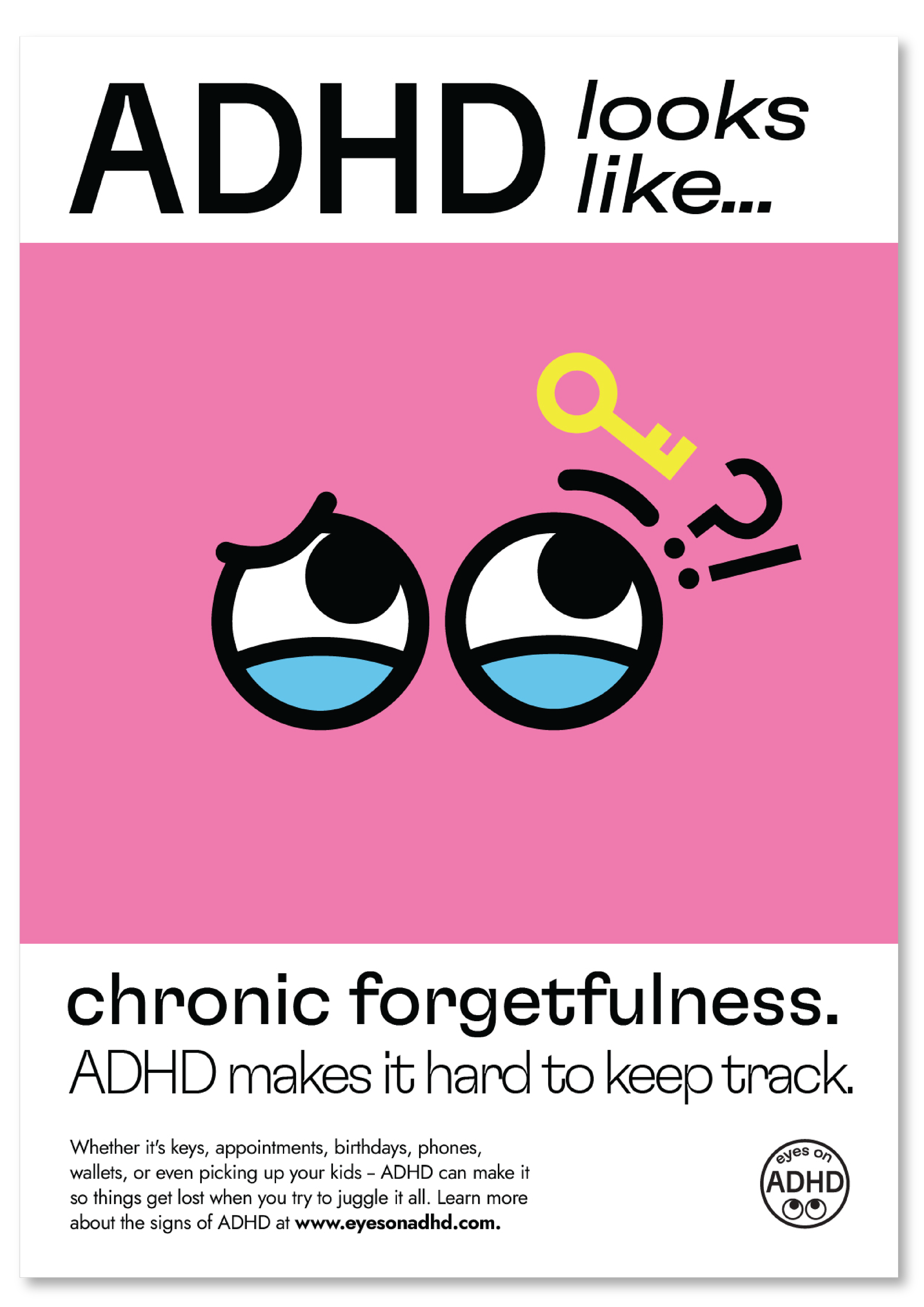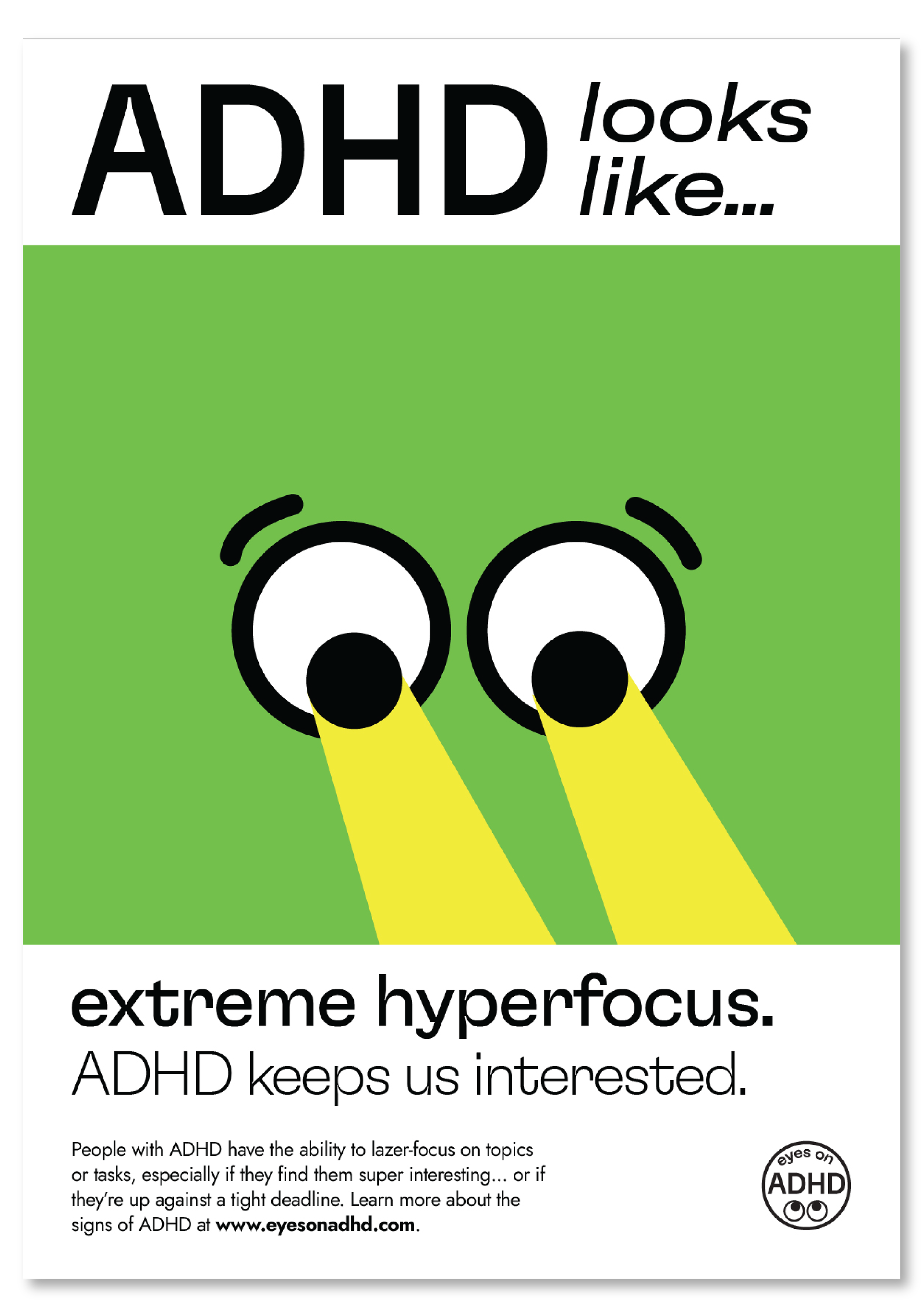Eyes on
ADHD
Year
2022
Client
DDI
Brief
Major Project
Brief
The DDI Major Project brief encouraged all students to identify and research a unique problem that could be solved with original design solutions. Intentionally open-ended, it allowed students the flexibility to pursue individual strengths and interests.
Inspired by my experience with late-diagnosed ADHD and my frustrations with finding adequate care and resources in Ireland, I created “Eyes on ADHD,” a national awareness campaign designed to initiate conversations about ADHD, inspire action, and challenge common misconceptions.
Process
For my research, I looked into local and international organizations and resources for ADHD and other neurodiversities. I created a survey to gather insights from the general public and their opinions on ADHD, interviewed teachers, ADHD coaches, psychiatrists, and the CEO of ADHD Ireland.
I found that resources for ADHD were underfunded and that years-log wait lists and high price tags created nearly insurmountable barriers to entry for people seeking diagnoses, care, or medication management. I also found that the general public carried many misconceptions about different presentations of ADHD, which means that many people slip between the cracks and grow into adulthood without understanding why they are failing to thrive.
Posters
Is there anything more eye-catching then a massive set of googly eyes? Every campaign poster features a commonly overlooked or misdiagnosed symptom of ADHD, brought to life by a set of expressive cartoon eyeballs and bright, engaging colors. The striking visuals serve to connect with the viewer and get them curious about ADHD.
Each poster first describes a symptom at face value, then contextualizes it as a potential signal of undiagnosed ADHD. People are encouraged to further explore other potential signals of undiagnosed ADHD by visiting the campaign website, eyesonadhd.com. The campaign logo sits in the lower right corner, which eye-mapping technology has shown to be the last part of the poster that people typically see. This leaves the viewer with an impression of the campaign identity and serves to further drive brand recognition and awareness.
Typefaces used in the campaign include GT Flexa and Jost.
Posters and other advertising materials direct people to the Eyes on ADHD website. The webpage is an interactive minimalist design that encourages people to explore the four pillars of the Eyes on ADHD campaign: Awareness, Detection, Help, and Difference.
The website features background information on ADHD and a brief overview of some of the commonly overlooked symptoms and frequently undiagnosed demographics. Visitors can also find links to online self-tests and resources to help cope with daily ADHD symptoms, such as links to coaching, psychologists, psychiatrists, podcasts and youtube links.
You can visit the Instagram profile by clicking here, and check out the Figma prototype of the website by visiting this link.
Website
Merch
Stickers and pins featuring the campaign logo and primary color palette can be used to further spread awareness, interest, and brand recognition.
Hats and T-shirts display campaign colors and provide people with unique new ways to connect with the brand. Beanies have colors and expressions that match a few of the campaign posters, and people can pick the ADHD symptom they most identify with.
Feeling blue? Pick up a depression beanie! Are you always misplacing things and chronically late? Wear forgetful in pink! Perhaps you don’t get your full 8 and you’d rather sport sleep-deprived green. Or, opt to stand out from the crowd (yes, everyone IS looking at you) with the bright yellow anxiety beanie.


















